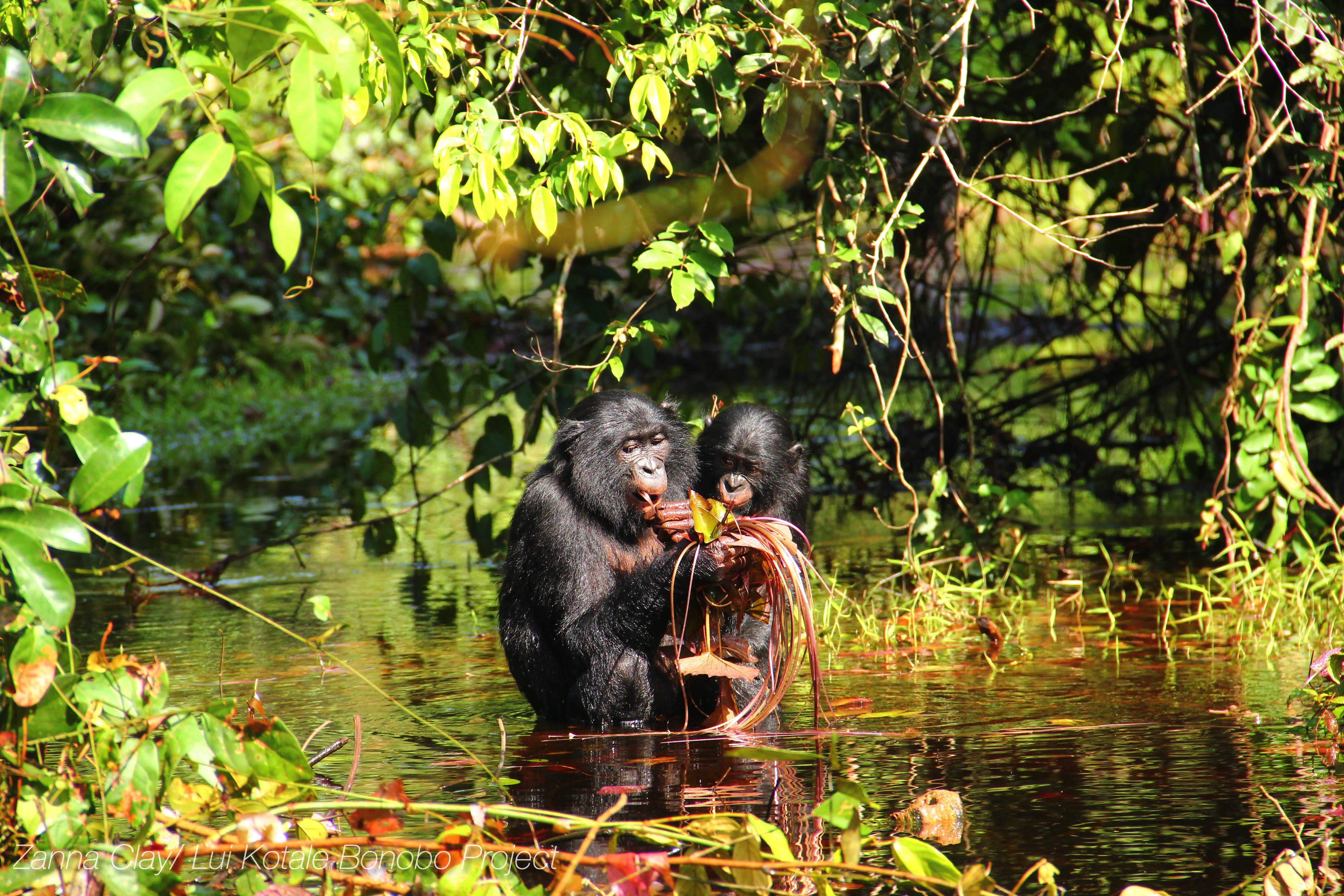Bonobo Communication: Evidence of Language-Like Traits
Bonobo communication has become a subject of captivating research, illuminating the intricate ways these intelligent primates convey messages among themselves. Recent studies, spearheaded by experts from institutions like the University of Zurich and Harvard, reveal that bonobos utilize forms of ‘bonobo language’ that closely resemble human communication techniques such as compositionality. Their vocalizations, which range from peeps to whistles, demonstrate a surprising level of sophistication, suggesting that these animals may share the evolutionary roots of complex language with humans. This suggests that just like human vocalizations, animal vocalization plays a pivotal role in navigating their social complexities. Understanding bonobo communication not only enriches our knowledge of animal behavior but also offers fascinating insights into the evolution of human communication and social dynamics.
Exploring the nuances of bonobo vocalization reveals how these remarkable creatures engage in sophisticated social interactions. Their ability to create intricate sounds and signals can be likened to a rudimentary form of language, providing a glimpse into the origins of verbal communication in the animal kingdom. This vocal complexity highlights the importance of social relationships among bonobos, echoing similar patterns seen in other intelligent species like chimpanzees. As researchers delve deeper into the linguistic capabilities of these primates, they uncover layers of social interaction that enhance our understanding of not just animal communication, but the evolutionary tapestry that connects humans and our primate relatives.
Understanding Bonobo Communication
Bonobos exhibit a fascinating array of vocalizations that demonstrate their ability to communicate complex social situations. This communication is not merely instinctual; it showcases a level of intentionality similar to human language. Researchers like Martin Surbeck and Simon William Townsend have highlighted how bonobos use sound in a combinatorial way, creating vocal sequences that serve specific purposes within their social groups. Through extensive field studies, observations have revealed that honks, whistles, and peeps can align with particular contexts and social interactions, shedding light on their rich social complexity.
The research conducted in the Kokolopori reserve has provided invaluable insight into the nature of bonobo communication. By cataloging different sounds associated with various social scenarios, scientists have begun to construct a ‘dictionary’ of bonobo vocalizations. This database has proven critical in understanding how these primates use their vocal repertoire to signal emotions, intentions, and warnings, thus effectively coordinating group dynamics even over considerable distances.
The Role of Compositionality in Bonobo Language
Compositionality, the ability to combine different elements to create new meanings, is a key feature that links bonobo communication to human language. Just as humans can create unique expressions through variations in word order and combination, bonobos too demonstrate this linguistic trait through their vocalizations. For instance, certain sounds can modify or enhance the meanings of others, indicating different states or commands, such as signaling danger or alerting the group to a change in their environment.
This level of abstraction in communication is significant because it implies a cognitive complexity that was traditionally thought to be exclusive to humans. As researchers uncover more about bonobo vocal patterns, the implications for understanding the evolution of language continue to grow. The shared ancestry between humans and bonobos, dating back several million years, suggests that the capacity for this kind of linguistic structure may have developed long before the emergence of modern human language.
Social Complexity and Communication in Bonobos
The intricate social structures of bonobo groups necessitate a sophisticated form of communication. Bonobos do not merely communicate to express needs; they form intricate social bonds that require constant interaction and coordination. The study conducted by the University of Zurich and Harvard University indicates that as social complexity in bonobo communities increases, so too does the complexity of their communication. This correlation highlights the idea that as social structures evolve, the methods of communication adapt to facilitate these interactions.
This phenomenon is not limited to bonobos; it opens wider discussions on how different species cultivate their communication systems based on their social needs. For example, chimpanzees have exhibited similar complexities in their vocalizations, suggesting that social bonds and the need for interaction might drive the development of advanced communication strategies across various species. Understanding bonobo communication thus provides crucial insights into the evolution of social interaction and language among primates.
Comparative Vocalization Studies Among Primates
Adding to the growing body of research on primate communication, studies on bonobos have emphasized the importance of comparing different species within the hominid family. While bonobos and chimpanzees display remarkable similarities in vocal behaviors, the differences in their social systems yield divergent paths in their communication development. Recent studies suggest that it is the bonobos, with their more egalitarian and fluid social structures, that exhibit a broader range of vocal complexities, indicating a unique evolutionary trajectory that has emphasized cooperation over competition.
This comparative approach not only highlights the significance of social relationships in shaping vocalization but also underscores the adaptive nature of communication systems across species. The findings regarding bonobo communication add depth to our understanding of animal vocalization by revealing that enhanced social bonds can lead to more sophisticated forms of communication, potentially reflecting the evolutionary pressures that have shaped human linguistic capabilities.
Implications for Human Evolution Studies
The findings from recent bonobo communication studies carry significant implications for understanding human evolution. The parallels between bonobo vocalizations and early human language provide valuable insights into how complex forms of communication may have emerged. By studying bonobos, researchers can glean clues about the cognitive developments that may have been present in our common ancestors, raising questions about when and how compositionality in language first began to develop.
Additionally, these insights help in portraying a more nuanced view of early human societies and their communication methods. As researchers delve deeper into bonobo language, they enrich our understanding of the roots of language and how functional communication systems can evolve in intelligent species. Such studies prompt further inquiry into the role of social organization in the emergence of language, spotlighting bonobos as a key area of interest in tracing our evolutionary heritage.
Animal Vocalization and Human Language
The exploration of animal vocalization has always intrigued researchers, particularly in the context of understanding the origins of human language. Bonobos, with their rich array of vocal sounds used in various contexts, offer a window into the early stages of linguistic development. By identifying patterns and meanings behind bonobo vocalizations, scientists can better comprehend the underlying principles of language that may connect us with our primate relatives.
Research into bonobo communication suggests that the building blocks of language—such as syntax and phonetic structure—may not be exclusive to humans. The complexity observed in their vocalizations challenges traditional perspectives on the uniqueness of human language. Observations indicate that as social and environmental demands on species increase, so too do their communicative capacities, illustrating a continuum in the evolution of vocal communication across species.
Challenges in Studying Bonobo Vocalization
Despite the promising findings related to bonobo communication, challenges persist in fully understanding the depth and nuance of their vocalizations. One significant challenge is the need for long-term observation in natural environments to capture the range of contexts in which these vocalizations occur. Moreover, researchers must contend with the inherent variability in animal behavior, making it difficult to establish consistent patterns that can be generalized.
Accurate interpretation of bonobo vocalizations also requires interdisciplinary approaches, integrating insights from linguistics, anthropology, and cognitive science. This holistic perspective is crucial in transparent documentation of their communication strategies, which ultimately strives to create a comprehensive understanding of not just bonobo vocalizations but animal communication at large.
Future Directions in Bonobo Research
As research into bonobo communication expands, the future holds great potential for uncovering even more about how these primates interact with one another. Advancements in technology and methods, such as acoustic analysis tools and machine learning, may provide deeper insights into the patterns and functions of bonobo vocalizations. These innovations may aid in differentiating subtle nuances within their vocal repertoire, offering a closer look at how they convey meanings.
Moreover, integrating findings from bonobo studies with ongoing research in the field of evolutionary biology will likely lead to a richer, more integrated view of language development across species. By continuing to explore bonobo communication and its implications, researchers can contribute significantly to the broader understanding of language evolution and the cognitive capabilities that underpin it.
The Importance of Conservation in Bonobo Studies
Understanding bonobo communication is not only an academic pursuit; it also carries real-world implications for the conservation of their species. As habitat loss and poaching threaten bonobos in the Democratic Republic of Congo, ongoing research into their vocal behaviors can underscore the importance of preserving this unique primate. The intricate social structures and communication abilities of bonobos highlight their role within ecological systems and the need for conservation efforts that recognize their significance.
Furthermore, increased public awareness and interest in the research findings surrounding bonobo communication can foster greater support for conservation initiatives. Advocating for the preservation of bonobos not only helps protect a vital species but also aids in maintaining biological diversity, which is critical for the health of ecosystems. By linking language evolution studies to conservation efforts, researchers can advocate for a holistic approach to understanding and protecting our closest living relatives.
Frequently Asked Questions
What is bonobo communication and how is it similar to human language?
Bonobo communication refers to the vocalizations and signals used by bonobos to convey messages within their social groups. Recent studies suggest that bonobos utilize a system akin to human language, incorporating elements like ‘compositionality’, where they combine different sounds to create meanings, much like how humans form phrases and sentences.
How do bonobos demonstrate compositionality in their vocalizations?
Bonobos exhibit compositionality by using a variety of vocalizations, such as peeps, yelps, and whistles, that can convey complex meanings when combined. For instance, different sounds can signal actions, emotions, or social dynamics, demonstrating a structured approach to communication similar to that of humans.
What role does social complexity play in bonobo communication?
Social complexity significantly influences bonobo communication, as their intricate social bonds require sophisticated vocal interactions. Bonobos utilize their advanced communication skills to maintain relationships, as evidenced by their ability to coordinate movements and convey emotions during social situations.
How do researchers study bonobo language and communication strategies?
Researchers study bonobo language through extensive field observations, recording various vocalizations alongside contextual behaviors. Using a comprehensive method, they’ve compiled a ‘dictionary’ of vocal sounds to analyze patterns and meanings, shedding light on the complexity of bonobo communication in relation to human evolution.
Can bonobo communication provide insights into human evolution?
Yes, insights gained from bonobo communication can enhance our understanding of human evolution. As bonobos and humans share a common ancestor and demonstrate similar traits in social structure and communication complexity, studying bonobo vocalizations can reveal the evolutionary roots of language and social interaction.
What are the key features of bonobo vocalizations in social contexts?
Key features of bonobo vocalizations include varied sounds like peeps, yelps, and whistles that convey different messages depending on context. For example, a subtle peep before a whistle may indicate a tense social situation, showing how vocalizations are tailored to express nuanced meanings in their social environments.
In what ways can understanding bonobo language influence animal vocalization research?
Understanding bonobo language can revolutionize animal vocalization research by providing a model for studying complex communication systems in other species. By identifying and analyzing the compositionality found in bonobo vocalizations, researchers can better comprehend the evolution of communication strategies across diverse animal groups.
How does bonobo communication compare to that of chimpanzees?
While both bonobos and chimpanzees exhibit complex communication systems reflective of their social structures, bonobo communication is characterized by its combinatorial complexity. Recent studies indicate that bonobos employ a broader range of vocalizations to convey information compared to the more focused studies primarily conducted on chimpanzee calls.
What discoveries have been made about bonobo language in recent research?
Recent research has revealed that bonobos utilize a sophisticated form of communication that includes the use of word compounds and phrases, much like humans. This finding indicates that the roots of compositional language may predate human linguistic evolution, highlighting the advanced cognitive abilities of bonobos.
How might bonobo communication evolve to maintain social bonds?
Bonobo communication is likely to evolve further as these animals adapt to their social environments. The complexity of their vocalizations may increase to better express relationships and emotions, facilitating stronger social bonds and coordination within their groups.
| Key Point | Details |
|---|---|
| Bonobo Communication | Bonobos vocalize to communicate complex social situations. |
| Vocal Dictionary | Researchers created a dictionary of vocalizations showing bonobos form word compounds and phrases. |
| Research Locations | The studies were conducted in the Kokolopori reserve, Democratic Republic of Congo. |
| Compositionality | Bonobos display a level of ‘compositionality’ similar to human languages, creating new meanings. |
| Social Bonds | Bonobos maintain complex social bonds, which support their intricate vocal communication. |
| Conclusions on Evolution | Communicative complexity in bonobos reflects their evolutionary history and social needs. |
Summary
Bonobo communication has revealed fascinating insights into the evolution of language. This study highlights that bonobos are capable of utilizing sophisticated vocalizations much like humans do, showcasing their ability to convey complex social situations through composed phrases and terms. The research underscores the importance of understanding bonobo communication in the context of human evolutionary history, suggesting that the roots of our linguistic capabilities may extend back to our common ancestors.



